Dreaming in the Lotus: Buddhist Dream Narrative, Imagery, & Practice
By Serinity Young
Wisdom Publications: Boston, 1999
296 pp.; $18.95 (paper)
MARK EPSTEIN, M.D.
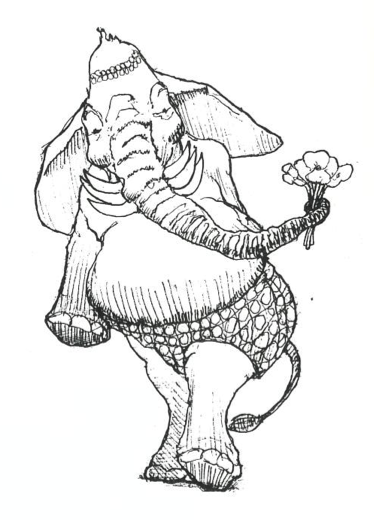
Dreams play an uncelebrated but important role in the Indo-Tibetan tradition. From the time of the earliest Vedas, the very existence of the universe was linked to the dream. At the beginning of this kalpa, or aeon, nothing existed but a vast ocean upon which a sleeping god floated atop a coiled snake. As Lord Narayana, the Hindu god Vishnu, slept, he dreamed of a lotus growing out of his navel, from which arose the entire universe. As the Buddha later affirmed in his eight parables of emptiness, this world may be compared to an illusion, a mirage, a reflection of the moon in water, an echo, an apparition, an image in the mirror, a magical creation, or a dream. Our dreams connect us back to the sleeping Narayana. Like him, we create entire worlds out of nothing when we sleep.
Serinity Young’s Dreaming in the Lotus uses the dream as a vehicle to understand Buddhism, while tracing the development of Buddhism’s understanding of the dream. As the editor-in-chief of the Encyclopedia of Women and World Religion, she is nothing if not well informed. There are fourteen interesting footnotes in the first three pages of her text, seventy-one pages of footnotes in all. We are introduced from the start to the Buddhist view that the dream life affords an opportunity to glimpse the true nature of reality, providing a truer window into the nature of illusion than that of waking consciousness. Not only that, but as consciousness is clarified, dreams can become signposts of spiritual progress, affirming the attainments of the dreamer. Both of these assertions set Buddhist dream theory apart from its cousin, psychoanalytic dream theory.
Dreaming in the Lotus is full of interesting imagery, through which we can trace the development of Buddhist thought. We learn of the first recorded dream in Buddhist history, the conception dream of the Buddha’s mother, who sees a white elephant clutching a white lotus flower and gently striking her right side with his trunk before entering her womb. The elephant is the Buddha and the dream prefigures her pregnancy. We learn of the Buddha’s dream of climbing a mountain of dung without being soiled by it. We read of the dream that came to the mother of one of Padmasambhava’s two consorts upon her daughter’s conception: a turquoise stupa rising from her head while the surrounding kingdom was burned by the simultaneous rising of eight suns. Professor Young makes no attempt to interpret these dreams, but she gives us the benefit of the traditional understandings of them.
As Dr. Young progresses through Theravada and into the Tibetan tradition, her discussion becomes more and more intriguing. Tibetan Buddhists see the dream state as bearing a distinct similarity to the bardo realm, the state between death and rebirth. In both situations, the unpracticed individual has no control over the unfolding of events. We are buffeted about in the bardo much as we are in our dreams, and any hope of controlling our destiny through the power of our meditation rests, in the Tibetan Buddhist view, with our ability to stay conscious during our dreams. This is the essence of Dream Yoga, the third of the so-called Six Yogas of Naropa, and it is in the discussion of this practice thatDreaming in the Lotus excels. Dreaming becomes practice for death and a vehicle for awakening. It is the royal road, not just to the unconscious, but to the Buddha land as well.
Mark Epstein, M.D., contributing editor to Tricycle, is the author of Thoughts without a Thinker and Going to Pieces without Falling Apart (Broadway Books).
Buddhism in America
By Richard Hughes Seager
Columbia: New York, 2000
304 pp.; $35 (cloth)
DON MORREALE
A story from the Hindu tradition illustrates a basic problem. Three blind sages are asked to describe an elephant. One grasps the tail and says, “It is like a rope.” The second takes hold of the trunk and says, “No, it’s like a snake.” The third clutches a leg and says, “You’re both wrong. It’s exactly like a tree.” All are correct from their points of view, but none of them gets the whole picture. To apprehend the true nature of the beast, they must await the coming of a clear-eyed sage. Like the three blind sages, those of us who are engaged in formal Buddhist practice tend to assess dharma in this country from the vantage point of our own practice communities. The saving grace for Richard Hughes Seager is that he approaches his study of Buddhism in America as an outsider. Armed with the analytical tools of a scholar and religious historian and the objectivity of a student of comparative religions, he offers a perspective that is at once fresh, balanced, and vastly entertaining.
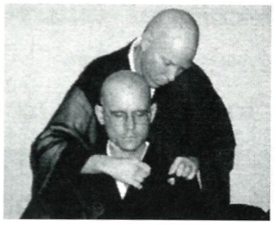
“What is American Buddhism? There is not a single answer to that question, nor is there likely ever to be,” he writes. “There is not one American Buddhism, any more than there is one American Judaism, Islam, or Christianity.” In fact there are three, according to Seager: converts, recent immigrants, and old-line Asian-American Buddhists who have been adapting the dharma to life in this country for nearly five generations.
The book opens with a brief history of America’s “indigenous Buddhist lineage,” citing the contributions of Transcendentalists, Theosophists, and the Beats who inspired a thirst for enlightenment among the rising baby boom generation. Of equal consequence, in Seager’s view, was the relaxation of U.S. immigration laws in 1965. The subsequent influx of immigrants from the Far East and Southeast Asia has enriched the spiritual landscape with a host of new traditions, teachings, and practices.
At the heart of the book are six finely crafted portraits of the major Buddhist lineages at work in this country: Jodo Shinshu, Nichiren/Soka Gakkai, Zen, Vajrayana, Theravada, and a collection of ethnic traditions from Vietnam, Korea, and China. Though they hold a demographic edge—possibly as many as three-fourths of the American Buddhist population-immigrant contributions to the spread of dharma in the West have been largely overlooked and underrated. Apart from their substantial material offerings—Chinese-American shipping magnate and philanthropist Chia Theng Shen, for example, donated the land for Karma Triyana Dharmachakra in Woodstock, New York—ethnic Buddhists serve as a living link with the Asian roots of our traditions, establishing “communities of discourse” between the old world and the new. “Immigration,” Seager argues, “has changed America in ways that can only suggest how Buddhism might one day have a powerful impact on the entire nation. Over the course of a century or more, both Jews and Catholics moved from the margins of American society into its mainstream. Most of the consequences are today largely taken for granted.”
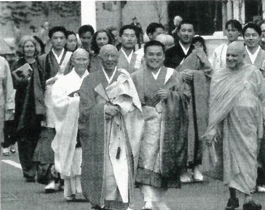
For Seager, the most prominent feature of New World Buddhism may be the gulf between immigrants and converts. Whilethe former embrace the preservation of tradition-—taking doctrine as literal, ritual observance as central, and enlightenment as an essentially religious aspiration—the latter assume a secular posture, plumping for innovation and adaptation, keeping ritual to a minimum, and wedding the practice to psychotherapy and social transformation. There exists “a running debate as to which group will carry the standard.” In the end, the definition of American Buddhism will depend on how the various communities successfully negotiate questions of leadership, succession, and keeping and replenishing the membership.
Seager concludes with a modest proposal: “American Buddhists, both immigrants and converts, might do well to pay more attention to the progress of older groups like the Buddhist Churches of America, in which tensions between tradition and innovation, sectarianism and universalism, Anglicization and language maintenance, and ethnic identity and Americanization have played themselves out over many generations.” The publication of Buddhism in America comes at a timely moment. Unbiased and insightful, it offers a view of how far the Buddhist movement has come in little more than a century and a peek at where it is going at the dawn of a new millennium.
Don Morreale is the author of The Complete Guide to Buddhist America and Buddhist America: Centers, Retreats, Practices (Shambala Publications, 1998).
Dalai Lama, My Son: A Mother’s Story
By Diki Tsering
Viking: New York, 2000
l89 pp.; $22.95 (cloth)
DIANA N. ROWAN
This fascinating story is told firsthand by the Fourteenth Dalai Lama’s mother, known as the Great Mother (1901-1980). A family project, the narrative comprises conversations recorded in the last year of her colorful life by her granddaughter, Yangzom Doma, and edited by her grandson, Khedroop Thondup.
The result is at once a priceless glimpse of His Holiness the Dalai Lama at critical moments in his life and an intensely moving personal account of a the life of a woman both simple and profound. She was born Sonam (“fertility”) Tsomo (“goddess of longevity”) into a prosperous peasant family in the Amdo district of Tsongkha, birthplace of Tsongkhapa, the fourteenth-century founder of the Gelugpa sect, the lineage of the Dalai Lamas. Upon her marriage, she became Diki Tsering (“oceans of luck”) and had to endure for years the traditional young wife’s hardships of near-slave labor in her husband’s family’s household. She relates dryly that it helped shape her character for the formidable challenges she would face in later life.
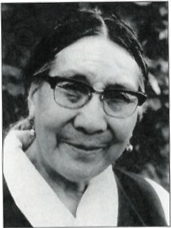
Her story, rich with details of regional lore about dress, cookery, religious ritual, and family customs, is a treasury of information about old Tibet and its culture. Some details of her fifth child’s birth and early childhood are familiar, yet intensely poignant, seen through his mother’s eyes. For instance, when he was barely able to talk, he told her that “he had come from heaven,” and was always packing his little belongings, telling her that he was going to go to Lhasa and would “take all of us with him.” In the historic procession to Lhasa that followed the boy’s identification as the Fourteenth Dalai Lama, there is an affectingly human note—Diki Tsering was eight months pregnant with her next child when she had to uproot herself from her home forever, bid farewell to all her relatives, and organize the massive details of moving children, servants, and livestock to the far end of her country.
Her family had been close to one of the regents, Reting Rinpoche, who had been among those who first identified Tsering’s son as the reincarnate Dalai Lama. Reting was also a close friend of the Dalai Lama’s father. In the seventeen years between the death of the Thirteenth Dalai Lama and the present Dalai Lama’s assumption of power, political warfare, which often spilled over into bloodshed, raged between two factions, one headed by Reting, who held the regency for many years, and the other by Taktra, another of the young Dalai Lama’s tutors. Political tactics were rough; a high government official had been punished by having his eyeballs gouged out; and poisonings were said to be common.
Diki Tsering relates that Taktra, who had gained absolute power as the new regent, disliked her family and that the young Dalai Lama was afraid of him. Reting had been struggling to regain power at the time that her husband died under suspicious circumstances (likely poisoned, Tsering writes); when a bomb was sent to Taktra’s office during the dispute, Reting was arrested for masterminding the plot. Monks at Sera Monastery, loyal to Reting, rebelled, shooting at the government forces arriving to take Reting from Sera to prison in Lhasa. Eighty Sera monks were killed, including the abbot. Reting was imprisoned and died shortly thereafter. Diki Tsering notes that “Government posters were placed all over Lhasa saying that if anyone speculated that Reting’s death had been anything but natural, that person would have his house burned, with him inside.”
When finally forced into the historic flight from Tibet, Diki Tsering escaped disguised as a soldier, with a toy rifle slung over her shoulder. His Holiness was not only disguised as a soldier, but as a servant, walking past the bright lights of the Chinese headquarters, where planning sessions were in full force. After crossing the river in skin boats, the escape party mounted horses, a hundred strong, “and the horses on the gravel sounded like thunder.” She was terrified that the sound would alert the Chinese. Later, their exhausted group, suffering freezing temperatures and fierce storms, would be met by peasants along the way who brought them food, warm clothing, and anything they could afford, “weeping with sorrow at the fate of Tibet.”
One may have heard stories of the Dalai Lama’s life, his struggle to protect his people, and his flight from Tibet countless times, but the details Diki Tsering provides catch the reader’s heart in a new way. One reads this book with renewed sorrow at Tibet’s fate, with gratitude to Diki Tsering, and with a renewed commitment to being part of the solution to this impossible tangle of human history.
Diana Rowan, a longtime practitioner, is a contributing editor to Tricycle and serves on the National Women’s Leadership Committee for the Women’s Studies in Religion Program at Harvard Divinity School.
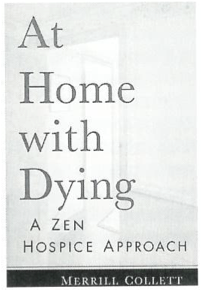
At Home with Dying: A Zen Hospice Approach
Merrill Collett
Shambhala Publications: Boston, 1999
240 pp.; $15.00 (paper)
DAVID GUY
In one of the most startling poems by Zen Master Ikkyu, he speaks of caring for his dying master (in this translation by Stephen Berg):
my dying teacher could not wipe
himself unlike you disciples
who use bamboo I cleaned his lovely
ass with my bare hands
Still more startling, at least to me, is the thought of people who do such work not for their beloved master, but for anyone who is dying.
“Cleaning our loved ones after a bowel movement may seem at first like a forbidding task, but we quickly find we want to do it well because they need our help so much . . . Put on latex gloves. Wipe the area with soft toilet paper or tissues. . . .”
With At Home with Dying I had expected an uplifting book full of stories about what the dying have to teach us, and—to be fair—the book does include its share of such stories. But Merrill Collett’s book is for the most part far more practical and realistic than that and shattered any romantic notions I might have had about hospice work. It is a practical manual about how to care for the dying and doesn’t neglect the small or unsavory details.
There is a major disconnect in this country between how people die and how they would like to. The vast majority—87 percent in a 1995 survey—would prefer to die at home, surrounded by loved ones. Instead most die in hospitals, in relative isolation, connected to tubes and undergoing radical medical procedures that may slightly prolong their lives but also put them through unnecessary pain and create a financial burden for their survivors. To most of the medical profession, death is the ultimate defeat, something it would rather not face.
The hospice movement, in stark contrast, sees death as a natural process that we must all face for our loved ones and for ourselves. The hospice surrounds patients with caregivers who help them go through the process in as natural a way, and with as little physical pain, as possible. Medical procedures may be used to improve the quality of life but not to prolong it unnecessarily.
Merrill Collett was a full-time resident at the San Francisco Zen Center for four years, and for two of those years volunteered at the Center’s Zen Hospice Project. At Home is Collett’s first book, a plainspoken text that stays resolutely down to earth. But the man knows whereof he speaks.
As much as anything about this book, I admire what it doesn’t say. Collett doesn’t talk a great deal about how people should or will die. He doesn’t outline proposals for enabling them to die in some supposedly spiritual way. His whole approach is to let people die as they wish and to be with them as they do. One of his most difficult assignments was a man who spent his last days staring at soap operas. Collett was right there with him. “At least,” he says wryly, “he didn’t channel surf.”
Spiritual practice was important to his life as a hospice worker. In fact, Collett sees meditation as a similar activity to dying: Both are processes of letting go, and deep meditative states show us that our lives belong not to ourselves, but to the universe. But though meditation can be a calming and helpful presence in the room of a dying person, the Hospice Project doesn’t force spiritual practice on its patients. Its point is not to effect some spiritual transformation.
Instead it lets the dying person take the lead and simply responds as needed. At Home doesn’t lack for expertise; it is full of practical suggestions about what equipment is helpful around the sickbed, how to bathe a patient and help him to the toilet, how to counsel visitors who may be uncomfortable around death. Collett sees listening and simple touch as among the most valuable gifts the caregiver can offer. He believes in letting the patient be angry, impatient, out of sorts: Expressing such feelings can be healing. Even dementia is not a mental condition to be alarmed about, but a natural part of the dying process.
There are a few places in the book where the writing seems sappy or obvious, where Collett tries to wax too eloquent in the face of death. But I finished this book full of admiration for him and for others who give their lives to this difficult and exacting work. His approach to death—and to living in the face of it—is clearheaded and exemplary. At Home with Dying is a practical and valuable guide for those who want to care for loved ones in this most difficult transition.
David Guy’s most recent book is The Red Thread of Passion: Spirituality and the Paradox of Sex (Shambala Publications). He is a contributing editor to Tricycle.
Essential Spirituality
The Seven Central Practices to Awaken Heart and Mind: Exercises from the World’s Religions to Cultivate Kindness, Love, Joy, Peace, Wisdom and Generosity
By Robert Walsh
John Wiley and Sons; New York, 1999
320 pp.; $24.95 (cloth)
GARETH SPARHAM
Essential Spirituality describes seven practices that Roger Walsh believes capture the essence of all religions. The first practice is transforming motivation. The second is cultivating love. Practices three and four are living ethically and concentrating the mind, and the fifth practice is the cultivation of awareness. Number six is the cultivation of spiritual wisdom, and the final practice is service to others. He takes a while to make the point that service, as he calls it, is not so much karma-yoga (the practice of good works) as bhakti-yoga, the worship of god. Wisdom is visionary wisdom that “rediscovers aspects of the perennial philosophy.” This wisdom is informed by the awareness that sees the sacred in all things, awareness that brings a peak experience that then becomes a plateau. Such awareness is underpinned by mental concentration and an ethical life rooted in higher motivation and a concern for others.
In each of the seven sections of his book, there is a description of a practice and useful spiritual exercises. Walsh uses the word practice in an unusual way. None of his seven practices are techniques (like chanting, or even specific meditation techniques like watching the breath), but are “rehearsals of desired qualities, which eventually became spontaneous”—think here of the basketball player, bringing a perfectly natural slam dunk into being by rehearsing the action again and again.
Walsh, a professor of psychiatry at the University of California, combines well-known spiritual exercises, taken mainly from the Burmese and Tibetan Buddhist traditions, with modern psychotherapeutic techniques. The book is worth reading just for the techniques. There are many of them, clearly set out. For example, he advises those new to spiritual exercises to keep a diary in which they record descriptions of their changing inner world, and he gives clear explanations of how to do basic breathing and insight meditations.
Since Walsh is talking about the essence of all the great religious traditions, the book is a collection of many fine stories and anecdotes. He retells a wonderful Zen story about the destructiveness of anger: A soldier goes to a Zen teacher to ask about hell and heaven. “You arrogant soldier,” the Zen teacher shouts, “you are too stupid to understand such matters. Get out of here.” In a fury the soldier raises his sword to cut the teacher’s head off. “Down that path is hell,” whispers the teacher. The soldier freezes, breathes deeply, and lowers his sword as he reflects on the willingness of the teacher to put himself in such danger to teach a truth. “And this,” smiles the Zen master, “is the way to heaven.”
The theoretical part of his book, based on the work of the Swiss thinker Frithjof Schuon (whose books are mentioned in the bibliography, but who is not acknowledged in the body of the text), is less successful. Schuon discerned what he called a perennial philosophy, a common, essential core in all religions. The danger in the perennial philosophy is the danger in any anodyne truth, that it can too easily mask intolerance: like boiled-down versions of modern Hinduism, where the doctrine of the oneness of religions serves as an ideology to deny a place to minority Muslims in India; or like pious Islamic protestations of equality that mask a die-hard unwillingness to embrace diversity.
On reading the book one is left wondering about the notion of an essential Buddhism said to be present inside different Eastern Buddhist traditions, wondering if here, too, we have a version of an essentialist philosophy that can too easily lead to exclusion and intolerance.
It is very hard to let go of a fabricated ultimate, a single absolute, and still retain any hope of beholding the sacred in the world. But we do not think that we know all about a forest from a single flower. And we do not praise the unfathomable beauty of a tiny flower by insisting that we know from it the infinite complexity of a vast forest. The value in the book, then, is not the philosophy or psychological layering; it lies in the insights of an ordinary man trying to find a meaningful spiritual practice. He sums up spiritual practice as “a routine of some kind with sacred time carefully set aside.” You could not have a better definition for traditional ritual, in the true spiritual sense of the word.
Venerable Gareth Sparham was born in England and grew up in Canada. He has been a monk for twenty-five years and is a lecturer in Tibetan and Sanskrit at the University of Michigan. Some of his recent books are Memoirs of a Tibetan Lama and Fulfillment of All Hopes of Disciples.
Thank you for subscribing to Tricycle! As a nonprofit, we depend on readers like you to keep Buddhist teachings and practices widely available.